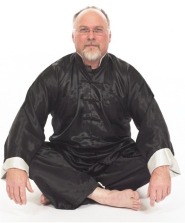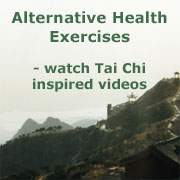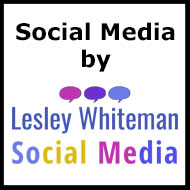– a saying often used by people as an excuse for their behaviour. Nonetheless there comes a time ( or many times ) in life when one benefits by asking ” what have I done – besides a few dinner parties and some holidays? ”
As I see it Tai Chi is something that offers an opportunity to do something for others and for oneself.
It is my experience that if science and technology are about learning how to do things easily following real world laws then in the case of Tai Chi the “technology” is about removing the artificial aquired habits that block our natural self – our buddha nature – or our natural movement – our chi – from being expressed – and discovering ones that facilitate our ability to be our natural selves.
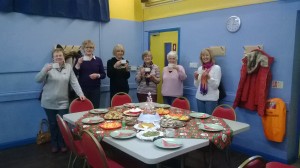 It is that time of year of course and we decided to have an extended session with snack lunch to celebrate – sort of “eat what you brung!”
It is that time of year of course and we decided to have an extended session with snack lunch to celebrate – sort of “eat what you brung!”

In your practice be wary of definitive arguments – especially of the “my great expert said this and they must be right” variety leading to an argument about who is the greater expert – they are a distraction from the reality of internal experience. There is only one solution – use the scientific method – collect data, read around it, ask recognised experts and practice, practice, practice to observe what actually happens in your body – in other words make up your own mind.
Accept the teaching of others as guidance, signposts in the style of “look over there, you may find something interesting”. Remember that where internal experience is involved then language is a very unreliable communication – a word can mean one thing to one person and something else to another – it can even mean different things to the same person at different times – and even during the course of the same conversation.
This is a major benefit of hands-on correction – the teacher cannot tell you verbally and you could not accurately understand the words anyway even in the same language – but by correcting physically he/she can move your body close to what they are seeking to transmit and you the student can have a direct experience of that holistically, to be held in memory for later practice.
My kids can’t/won’t have their breakfast, brush their teeth, get dressed, go to school in the morning until I have done their breakfast first – it is a time honoured sequence – there are many occasions in life where one action or outcome depends on a defined sequence like making a cup of tea. In my golf I find that the ball does not go where I want it to unless I prepare in a particular sequence then hit it – if I omit part of the sequence then it does not do what I would like. If I decide to have a shower and get myself dressed first in the morning then I am late doing the breakfast and the kids are potentially late for school, if you do not boil the kettle first then you have only cold tea. We can of course multi-task – but that simply involves juggling a number of parallel sequential processes – we still end up constrained by the length of the longest sequence – check out Critical Path Analysis.
So far so obvious – but look around and check just how basic this is – whether or not time exists in the quantum world – here in the macro world it certainly involves one thing happening after another – likewise in Tai Chi.
You cannot crack a whip without first moving the handle then sequentially each and every part of the whip one after the previous one – each building on the movement of the last to accelerate the next until finally the very tip is moving at the speed of sound – your relatively slow hand movement of the whip has been transformed into supersonic speed. Consider then if we work backwards from the handle to the hand and arm into the body to the centre and even further down our legs to the ground. Now let us travel backward – surely the force of the whip is rooted on/in the ground by our feet which are stationary, with the force itself initiated by the movement of our centre and augmented in the legs controlled and directed by the centre then transmitted sequentially out through each segment of the body, all the way down the arm where it initiates the movement of the whip itself. Our body has become a part of the whip – and infact works like the whip. Similarly with a weapon or a golf club – so we can say that the Chi is projected down the weapon or club to the tip or the head where it gets transferred to our opponent – or ideally the ball.
It is this movement which gives us the feeling of connectedness and fluidity – derived from the way each segment interacts with its neighbour and as with the whip any stiffness inhibits that interaction – we can say that “the Chi is blocked”. So we relax the stiffness, then we can move from the centre to initiate the power so that it can move outward in a fluid segmentally sequential movement. Indeed everything moves together – from the centre to the feet and from the centre to the finger tips.
If we get the sequence right then as with the whip we can create great speed and power in what looks like a very simple way. So perhaps in life – get the sequence right and life can be simple?
I saw a piece yesterday on a David Attenborough program about Archer fish – the young learn quite a complex hunting technique – shooting water at prey on branches above the surface – and they do it by following and watching the older fish. After a few days of watching – without actually practicing – they go off on their own and are able to shoot accurately themselves – just by watching.
Seems to me that we could and should learn how to do this in our Tai Chi – maybe watching Youtube videos is a good idea after all. But don’t forget to practice as well just to be on the safe side!
Here’s a couple of links on the subject:
http://www.ncbi.nlm.nih.gov/pubmed/16488871
http://www.eastscotbiodtp.ac.uk/archerfish-model-sophisticated-social-learning
So which came first – conflict or co-operation?
Martial Arts or Social Interaction?
The aggression and violence of “I want to eat you”. The defence of “I don’t want to be eaten”.
The approach of “I want to procreate with you” The defensiveness of “I don’t trust you” or “I don’t want to procreate”.
Well, it does seem that biologically speaking eating others probably came first with its attendant fighting and violence, quickly followed by social co-operation for mutual defense and to facilitate better eating.
Sex apparently came later (even sideways according to recent research) and took quite a while (in archaeological time) to get off the ground as it were. When it did, and especially when mammals got hold of it, then the whole thing of defence against being eaten and defense of young and improvement in social conditions came together in a sophisticated group sort of way.
People started to think about relationships in conflict (with nature) and in social co-operation – martial arts was born along with politics, philosophy, sciences and social sciences.
It seems to be that these are all so closely bound up with each other in their causation and their resolution that at a fundamental level it is impossible to separate them. Away from the fundamental – eat/get eaten, procreate – attract/reject scenarios, each aspect takes a different approach, but that is really all it is – a different perspective on the same human condition.
.jpg)
I am delighted that our move of the Luton class to its new venue at Chaul End Community Centre went smoothly yesterday with a good number of new beginners coming along.
The lesson plan was simply to give an introduction to Tai Chi with a fairly broad sweep of exercises and verbal description.
My thanks to the Chaul End Centre who have been very supportive to the class – so hopefully the very special introductory offer of £2 per class will bring Tai Chi within reach of many more people in the Luton and Dunstable area.
No need to book in advance – there is plenty of space – you can turn up on the night – please wear loose clothing and flat soled trainers. Contact me if you have any questions or check out the website here for further information.
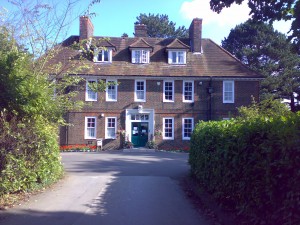 My friends and colleagues at The Letchworth Centre for Healthy Living have put together an excellent review of medical reports on the statistically significant effects reported in medical studies attributed to the practice of Tai Chi.
My friends and colleagues at The Letchworth Centre for Healthy Living have put together an excellent review of medical reports on the statistically significant effects reported in medical studies attributed to the practice of Tai Chi.
These include:
“Better physical and mental health statuses, lower blood pressure, less mood disturbance, more positive mood states”,
“Breast Cancer survivors: significant improvements in health-related quality of life and self-esteem”
“statistically significant improvement in self-assessed health of women aged 72 to 96”
and many many more – including bone density, cardiorespiratory function, lipid profile, sleep quality, Fibromyalgia symptoms, balance and blood presure – read the whole document here.

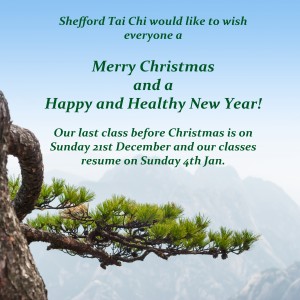


.jpg)

